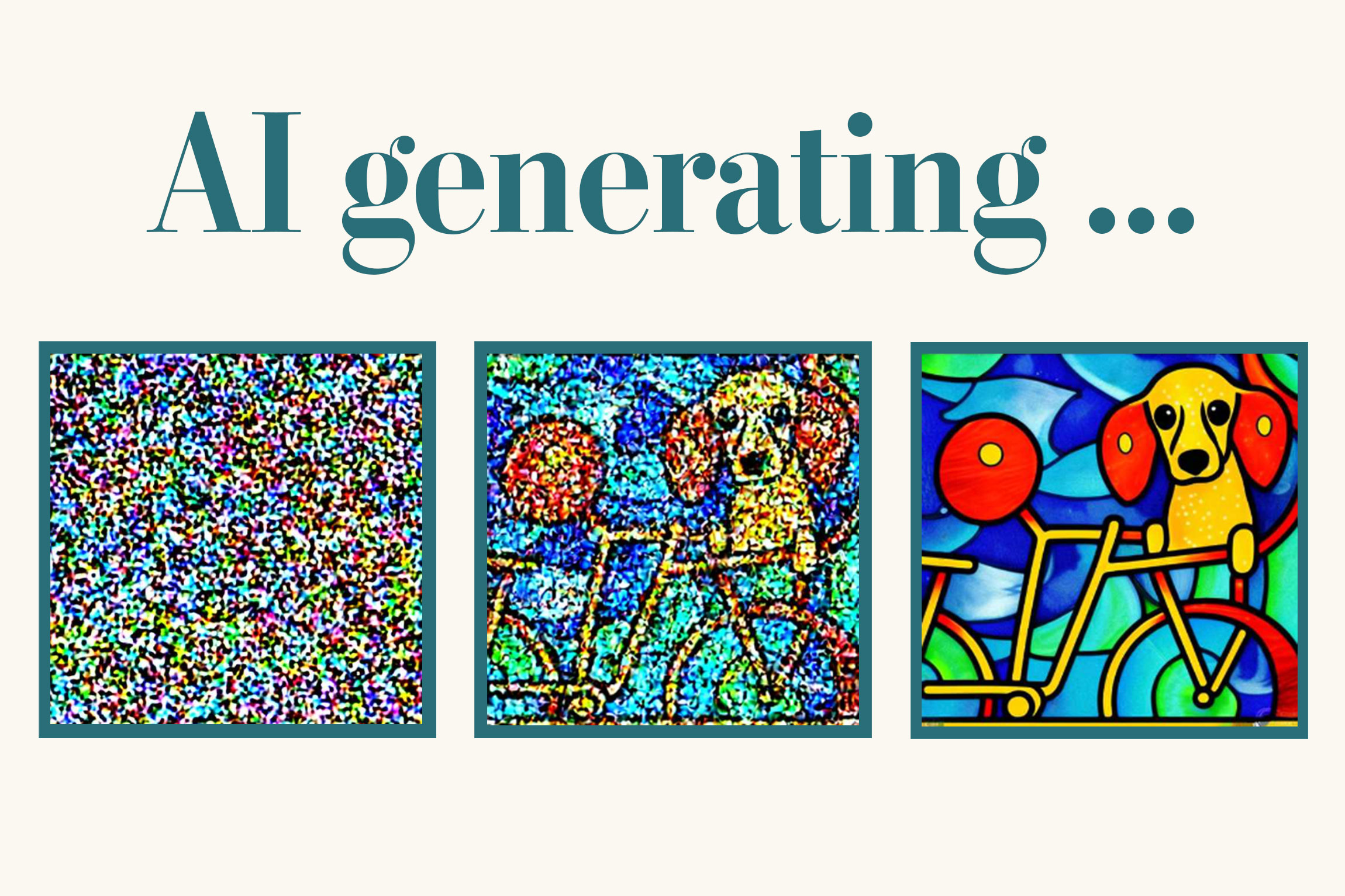
AI image generators are a type of artificial intelligence that can create images from text descriptions. They do this by using a process called machine learning to analyze a large dataset of images and their corresponding text descriptions. The AI image generator then learns to associate certain words and phrases with certain visual features. When it is given a new text description, it can use this knowledge to generate an image that matches the description.
There are two main types of AI image generators: generative adversarial networks (GANs) and diffusion models.
Generative adversarial networks (GANs)
GANs work by training two neural networks against each other. One network, the generator, is responsible for creating images. The other network, the discriminator, is responsible for distinguishing between real and fake images. The generator is constantly trying to create images that are more realistic, while the discriminator is constantly trying to distinguish between real and fake images. Over time, the generator learns to create images that are indistinguishable from real images.
Diffusion models
Diffusion models work by starting with a random image and then gradually adding detail to it. The model is trained on a dataset of real images, and it learns to add detail in a way that is consistent with the real images. This process can be repeated many times to create increasingly realistic images.
AI image generators are still under development, but they have the potential to revolutionize the way we create and consume images. They can be used to create realistic images for a variety of purposes, including advertising, entertainment, and education. They can also be used to create images that are impossible to create with traditional photography.
How AI image generators are used
AI image generators are used in a variety of applications, including:
- Advertising: AI image generators can be used to create realistic images for advertising campaigns. This can help to increase the effectiveness of advertising campaigns and reach a wider audience.
- Entertainment: AI image generators can be used to create realistic images for movies, TV shows, and video games. This can help to improve the quality of entertainment and make it more immersive.
- Education: AI image generators can be used to create realistic images for educational purposes. This can help students to learn more effectively and understand concepts more easily.
- Art: AI image generators can be used to create realistic images for art projects. This can help artists to create more realistic and detailed art.
The future of AI image generators
AI image generators are a rapidly developing technology. As they continue to improve, they will have an even greater impact on the way we create and consume images. They have the potential to revolutionize the way we interact with the world around us.
Here are some of the potential future applications of AI image generators:
- Virtual reality: AI image generators could be used to create realistic virtual worlds. This could have a major impact on the gaming and entertainment industries.
- Medical imaging: AI image generators could be used to create realistic medical images. This could help doctors to diagnose diseases more accurately and treat patients more effectively.
- Architectural design: AI image generators could be used to create realistic architectural designs. This could help architects to create more innovative and efficient buildings.
- Fashion design: AI image generators could be used to create realistic fashion designs. This could help fashion designers to create more stylish and unique clothing.
The possibilities for AI image generators are endless. As this technology continues to develop, we can only imagine the ways in which it will change the world.

0 Comments
Any Queries , You May Ask